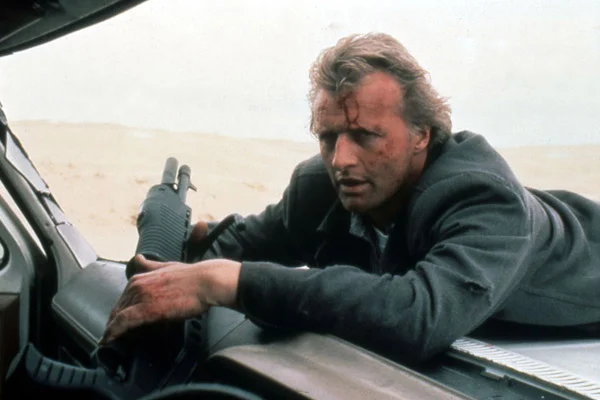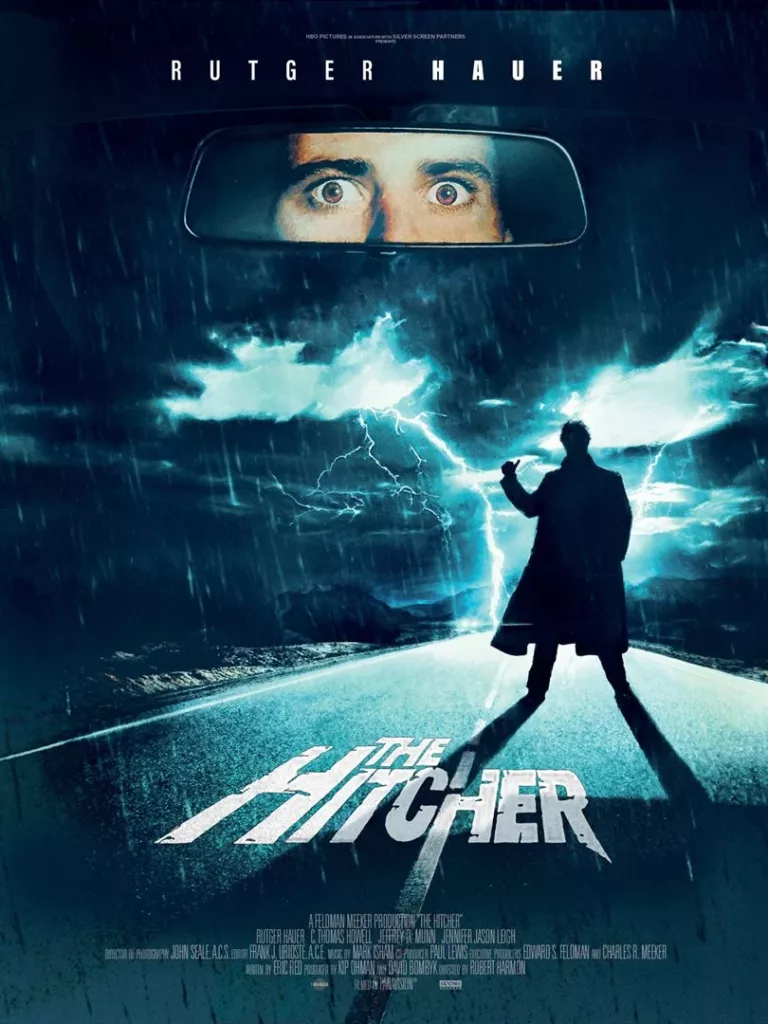On a stormy night, young Jim, who transports a luxury car from Chicago to California to deliver it to its owner, feeling tired and sleepy, picks up a mysterious hitchhiker, who has appeared out of nowhere, thinking that a good conversation will help him not to fall asleep. He will have enough time to deeply regret such an unmeditated decision.
Wednesday, April 10, 2024 marks the re-release in restored version of The Hitcher, directed by Robert Harmon and originally released in 1986. The film is a free adaptation of the true story of Billy Cook, who roamed the deserted roads in 1950 posing as a hitchhiker in search of prey to hunt and murder.
The Hitcher follows the cat-and-mouse principle, in which protagonist Jim (C. Thomas Howell) is pursued by a ruthless psychopath named John Ryder. Rutger Hauer’s performance is one of the most impressive of its kind, sending shivers down one’s spine – his jubilant stare never leaving one’s mind.

At first, John Ryder appears in the shadows, revealing himself to be a fearsome but utterly calm serial killer who enjoys making his victim suffer throughout the film. That’s why no one but him is allowed to touch his prey, not even the police.
Robert Harmon‘s rigorous direction gives the psychopath a mystical aspect, as if he were from the beyond, right from the start, in a low-angle shot where he seems closer to heaven than to earth. This character is accentuated by Mark Isham’s supernatural music inside a disused gas station. Most of the film takes place in the middle of a desert, with a wide road and no one around, yet John Ryder always finds a way to catch up with Jim. The killer appears in one scene, increasing the protagonist’s nightmare, then disappears from view the next moment, fatally incriminating Jim.
On the other hand, the director prefers to follow the point of view of the main character, who can only suffer what happens to him, notably by building up the tension to the unbearable when Jim leaves prison. The camera follows him slowly, as the viewer waits to discover the massacre in the police station. Just as when Jim thinks he’s relaxing with a leisurely meal, the gaze falls on his decomposing face, without necessarily imagining that he’s holding anything other than a French fry in his hand.
Finally, this dramatic experience has allowed the protagonist to grow up at the end of The Hitcher, who stands near a police car. Even if trouble awaits him as a result of his past actions, he strives to respect the law.








Be First to Comment